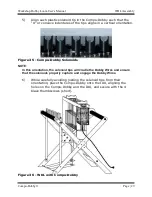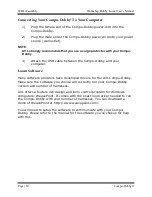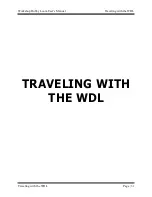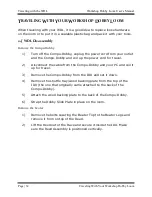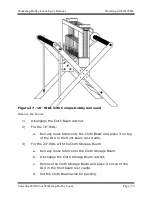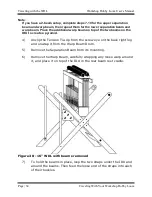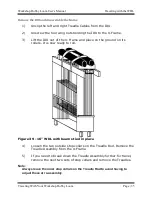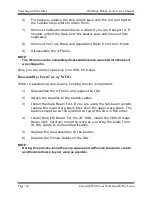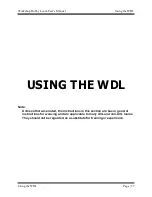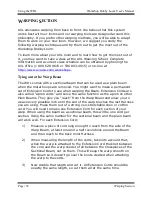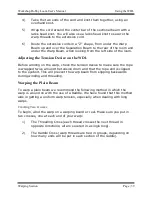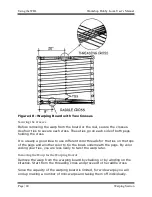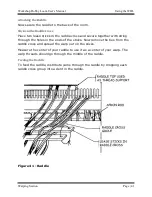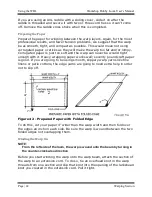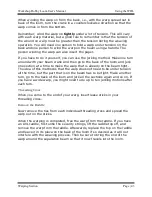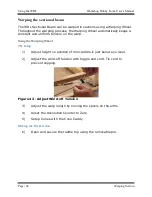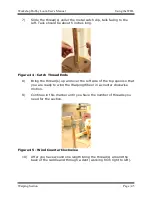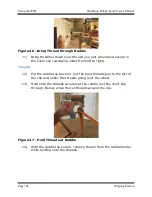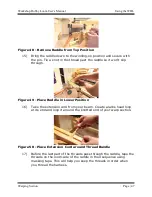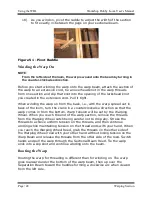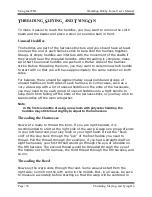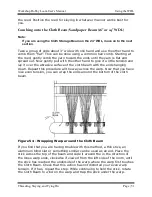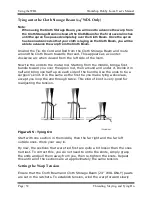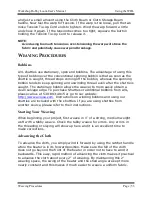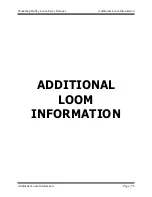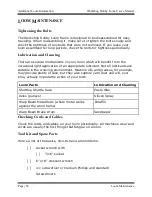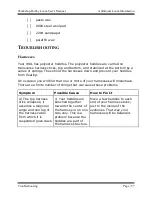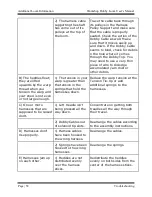
Workshop Dobby Loom User’s Manual
Using the WDL
Warping Section
Page | 43
When winding the warp on from the back, i.e., with the warp spread out in
back of the loom, turn the crank in a counterclockwise direction so that the
warp comes in from the bottom.
Remember; wind the warp on
tightly
under a lot of tension. This will vary
with each warp material, but a good rule to remember is that the tension of
the wound on warp must be greater than the tension during the weaving
operation. You will need one person to hold a warp under tension on the
back and one person to wind the warp on the beam using a handle. The
person winding the warp can also insert the paper.
If you have to do it yourself, you can use the jerking method. Make one turn
around with your beam crank and then go to the back of the loom and jerk
one section at a time to make the warp that is already on the beam tight.
The idea of this method is that the warp does not need to be under tension
all the time, but the part that is on the beam has to be tight. Make another
turn, go to the back of the loom and jerk all the sections again and so on. If
you have a wide warp, you might need to do up to ten jerking motions after
each turn.
Threading Cross
When you come to the end of your warp, insert lease sticks in your
threading cross.
Remove the Raddle
Now remove the ties from each individual threading cross and spread the
warp out on the sticks.
When the warping is completed, free the warp from the raddle. If you have
an AVL raddle, first untie the security strings, lift the raddle top off, and
remove the warp from the raddle. Afterwards, replace the top on the raddle
and leave it in its place on the back of the loom if so desired as it will not
interfere with the weaving process. Then be sure to bring the end of the
warp around the separation beam so that it now travels into the loom.

